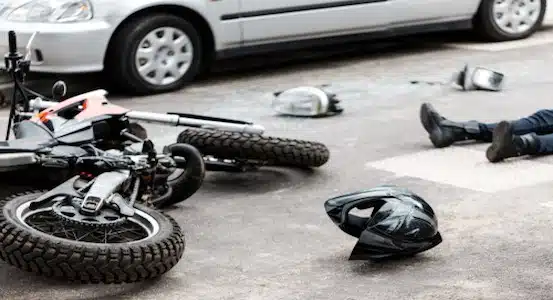We recently settled a serious motorcycle collision case and obtained substantial six figure compensation for our client who suffered a concussion and aggravation of a previously torn rotator cuff. He deserved exactly what he received as we moved toward trial. New York No-Fault laws are not the same for motorcycle accidents as compared to car and truck accidents.
Motorcycles are considered inherently dangerous and, therefore, No-Fault insurance does not cover motorcyclists. Motorcyclists injured in accidents must use their own private insurance to
pay for any accident-related expenses, including medical care and lost earnings. Motorcyclists must keep that in mind to protect themselves from misfortune.
On the other hand, there is one distinct legal advantage for motorcyclists who are injured in accidents. Motorcyclists have the right to file a lawsuit without having to meet the “severe” injury threshold. In other words, motorcyclists do not have to show a particular type of “severe” injury to bring a lawsuit. While it is much easier to bring motorcycle accident lawsuits, damages, pain and suffering and loss must still be proven in order to ultimately receive compensation.
The pleasure of riding a motorcycle must be tempered with an increased awareness of safety, given the extra risks.
REMEMBER: Rapid emergency braking will inevitably be required at some point when you’re on a motorcycle. Cars will not see you or will ignore you; you have to anticipate the negligence of other drivers every time you get on a bike. Circumstances will vary and there are no hard and fast rules, which aren’t subject to the particular situation. But, keep in mind that generally in emergencies and when necessary, apply both brakes to their maximum, just short of locking them up. Ride your motorcycle upright, traveling in a straight line when you are required to hit those brakes, and look where you’re going, not where you’ve been as you brake. Never lock the front brake, and if that front wheel chirps, release the brake for a split second, then quickly reapply it as smoothly as possible, short of locking it up. If the rear locks up, try and get the bike upright and pointing straight (if it isn’t already) then slowly ease off the back brake, which will help to avoid a high side. If the handlebars are straight, you should skid in a straight line, which gives you a better chance than a sideways skid. It’s cool to “live to ride” but riding to live is even cooler.
Related Posts
- 7 Things To Look For When Selecting A Personal Injury Attorney
We are often rushed when making some of the most significant choices in our lives.…
- Accidents due to Snow or Ice
Here in New York, we just got hit with a bit of snow. Travel advisories…
- Giordano Law Named Best Personal Injury Lawyers in Brooklyn!
Congratulations to Attorneys Carmen “Jack” Giordano, Stefanie Behler, and other staff attorneys for being recognized…


